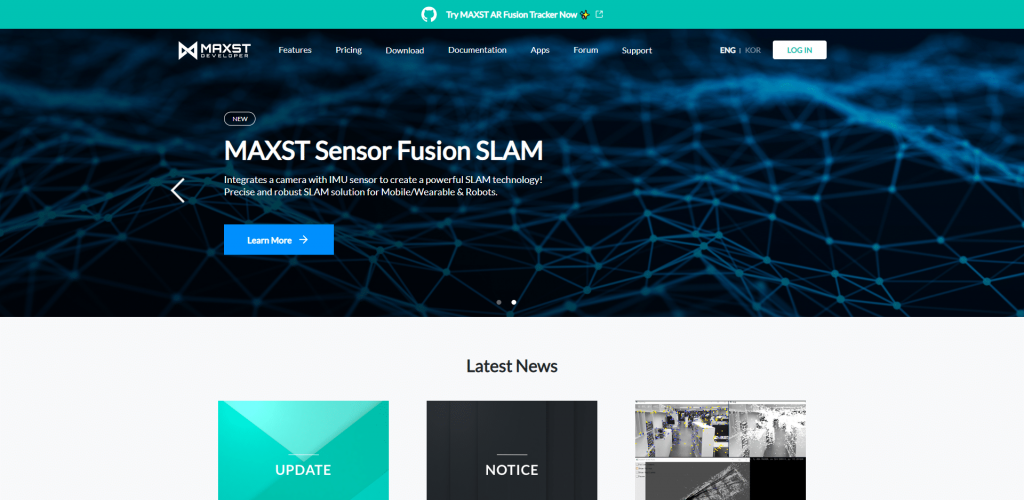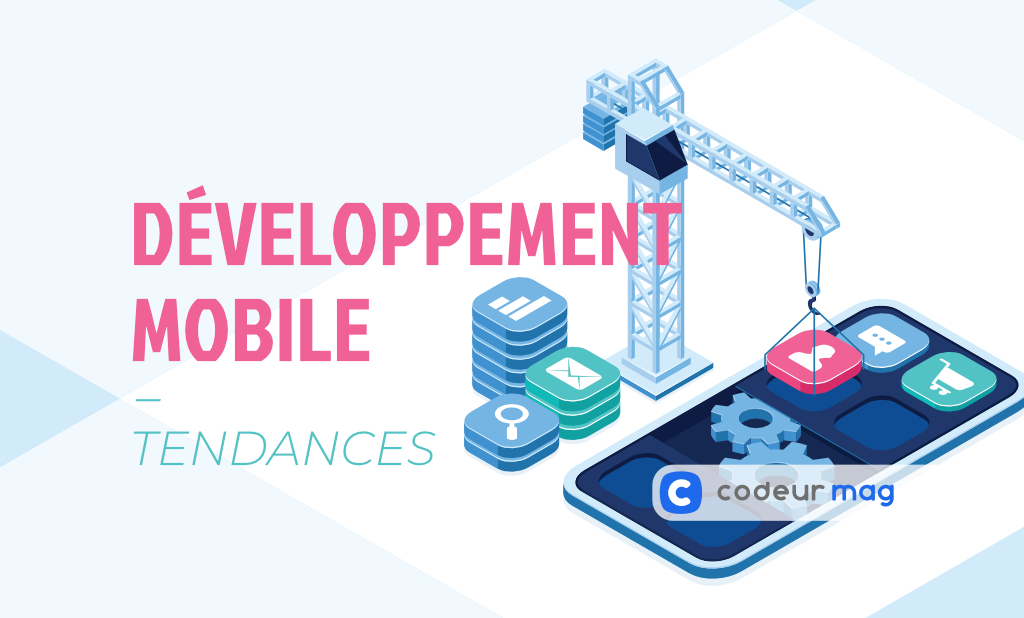How to create an augmented reality app?

Considered by many to be one of the most promising innovations in digital technology, augmented reality (or AR) is an application that adds layers of digital information to the physical world. While it is a growing trend, it has yet to unleash its full potential.
Augmented reality is an interactive experience for its proponents because it involves a real-world environment, adorned with computer-inserted images, providing a real-time hybrid experience for the user, placed in an environment intertwined with a “real” physical world and a simulated virtual object.
In the field of online commerce, the potential of AR is enormous! Particularly in terms of user experience and customer engagement.
That’s why many big brands have been quick to embrace augmented reality and its ability to drive engagement in their promotional activities. Smaller companies are expected to follow suit little by little, as AR is becoming more democratic and not only captures the attention of the audience, but also increases engagement that can turn into conversion.
How to create an augmented reality application?
Consider the steps mentioned below to develop your augmented reality application.
Conduct market research
The best way to research the market is to check out the neighboring apps already available on Google Play Store and App Store.
Download these apps similar to what you want to achieve, to check their different features and make a list of points you could improve.
You will need to check:
- their performance,
- their design (UI/UX),
- their speed,
- comments and evaluations left by users.
This way, you will identify their shortcomings and find ways to improve existing features, or flush out user wishes that you can include in your application to provide a better user experience for your customers.
In addition, you can also ask your friends, colleagues or anyone whose opinion you think is relevant. Ask them if they find the idea useful and what features they think might be missing.
Define a set of specifications
Once the market research is done, define your specifications: here is a list of requirements you can take into account before starting the development of your application.
This specification will make it easy to explain your requirements to application developers and if you want to build your application yourself, it will also be a good starting point.
- Lists of features and functions you want to include
- The type of mobile application, for example native or hybrid.
- The choice of platform: iOS, Android or other platforms specialized in augmented reality.
- Any specific technology, programming language or tool (which we will discuss below).
Develop the application
At this point, you have 2 options: if you are a developer, then go! If you are not, you can train yourself with one of the tools presented in this article, or you will have to contact AR experts, who will be able to understand your specifications and implement them.
Once you hire a developer, whether freelance or agency, your augmented reality app will slowly come to life. This is obviously the essential step in the development process.
Publish application
The process of submitting your app to the Apple App Store may take a few days, depending on the quality of the app and how well you followed the iOS development guidelines.
Google Play Store, on the other hand, doesn’t really have a review process: your app will be available within hours of submission. All you have to do is enter the following information, in addition to uploading your app:
- Title
- Category
- Keywords
- Description
- Icon
- Screenshots
What are the tools to create an Augmented Reality application?
Apple ARKit
Apple provides a framework for app developers (and businesses) to create augmented reality apps for its App Store.
This framework allows 3D objects and digital information to be integrated into the real world. Apple ARKit has visual inertial odometry that allows for accurate tracking of the real-world environment.
In addition to this, it has facial recognition to easily apply effects and mimic facial expressions, light tracking, angle tracking, 2D object detection and integration with third-party tools like Unity and Unreal Engine.
You can download it from Apple’s developer site.
Google ARCore
If you want to turn to the Google Play Store this framework has all the features to help developers merge the real world with the virtual world, thanks to the estimation of real-world lighting conditions, detection of size, location and angles, and motion tracking.
All of these features help provide highly realistic augmented reality for an enhanced user experience, making Google ARCore one of the best tools for augmented reality development.
It’s available for download on Google’s developer site.
Vuforia
Vuforia is an SDK providing immersive, mobile-centric augmented reality experiences. The Vuforia SDK is capable of identifying and tracking target images and 3D objects in real time. Developers can then orient and place virtual objects, 3D models and a variety of content in relation to the real environment.
Vuforia can also recognize multiple objects, supports text recognition and provides a wide range of vocabulary. It allows the creation of custom VuMarks, transforms static images into videos, and supports storage in the cloud or locally on the devices used.
For large enterprises, the price is custom. But if you make less than $10 million a year, and want to use Vuforia, count $42/month for the “Basic” version or $99/month if you choose the “Basic Cloud” option.
Maxst

Comprising of a nice variety of features, Maxst offers simultaneous visual localization and mapping. In addition, Maxst is capable of QR and barcode scanning, image tracking and Unity plugin integration.
Maxst offers a free version for a non-commercial application, count $50 per month otherwise, or opt for the $700 “One Time Fee” version. Both options are available as long as the application does not exceed 100,000 downloads. Customized then.
Wikitude
Wikitude is designed specifically to enable AR application developers to create location-centric augmented reality for users. It has grown to offer geolocation, tracking, and image recognition capabilities through its Simultaneous Localization and Mapping (SLAM) technology. To date, Wikitude is considered one of the best SDKs for augmented reality mobile application development.
For the price, count 2490€ for the “One Time Fee”, without SDK updates, or 3000€ to 4500€ per year, then a custom rate if you exceed certain limits.
Kudan
This engine is initially developed to meet localization requirements (with and without marker). It is optimized to provide fast performance and good reliability, and its operation is transparent until integrated into a chipset. With Kudan, you can make your augmented reality application development process smoother and have a very fast application.
Kudan is free to download but requires a license key to publish the application. You can get a free key for non-commercial or educational applications, otherwise it costs 1500€/year.
ARToolkit
ARToolkit is another popular, open-source option designed for developing AR-based applications.
Although it is completely free, ARToolkit offers many advanced features typically found in paid tools.
The rich feature set it provides, such as support for single and dual cameras, is considered extremely useful by developers. It even includes a digital compass and GPS, making the creation of location-based AR “almost” effortless…
DeepAR
Although DeepAR is not as popular as the other products mentioned here, it too has some interesting features that make it a good candidate for augmented reality app development. It can support real-time location tracking, facial detection, and is compatible with both iOS and Android devices.
You can calculate the cost of DeepAR yourself on the tool’s website.
Conclusion
Augmented reality is growing fast, but it has not yet released its full potential: indeed, AR has a wider scope of application and greater ease of use than virtual reality.
While large companies have already begun to take advantage of this technological advancement, small businesses can also consider AR to help their brand stand out from the competition.
With tremendous growth, augmented reality is expected to generate very high revenues over the next five years, but it’s important to understand that creating a successful AR application requires resources in time and money.
This article has helped you find the best tools and detailed the essential steps to developing your app.
Depending on what you want to accomplish with your augmented reality app, consider the widely varying price of the tools and whether you can develop the main function of your app in them.
We hope that all this information will help you in the creation of your augmented reality application.



